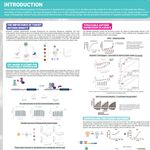Can Multiscale Computer Modeling Save the Human Genome Project?: Climbing the Omes for Schizophrenia
Multiscale modeling has arisen as a focus of computational systems biology, with the realization that genome, proteome, connectome, etceteromes, will only become comprehensible once placed in the context of explicit computer simulations. Measurements and activity patterns at one scale must be understood dynamically in the context of patterns at higher and lower scales. Nowhere is this more apparent than in the domain of brain disease, where manipulations at molecular levels (drugs) are used to change, licitly or illicitly, behavior and thought. We have begun to study schizophrenia and other brain dysfunctions with an eye towards connecting these levels in order to reveal functional and dysfunctional dependencies. Rather than only thinking hierarchically up the great chain of embeddings (e.g. from molecule to spine to dendrite to cell to circuit to area to behavior), it will be valuable to transform to other representational frames to connect across multiple scales.
Learning Objectives:
1. -Distinguish approaches, objectives, synergies of 1. mechanistic multiscale modeling; 2. phenomenological modeling; 3. AI through deep learning.
2. Appreciate how genomic, molecular, transcriptomic thinking and results can be integrated into functional contexts at higher scales.
3. Assess how datamining and simulation techniques interface with experiment and help integrate experimental measurements across scales.




